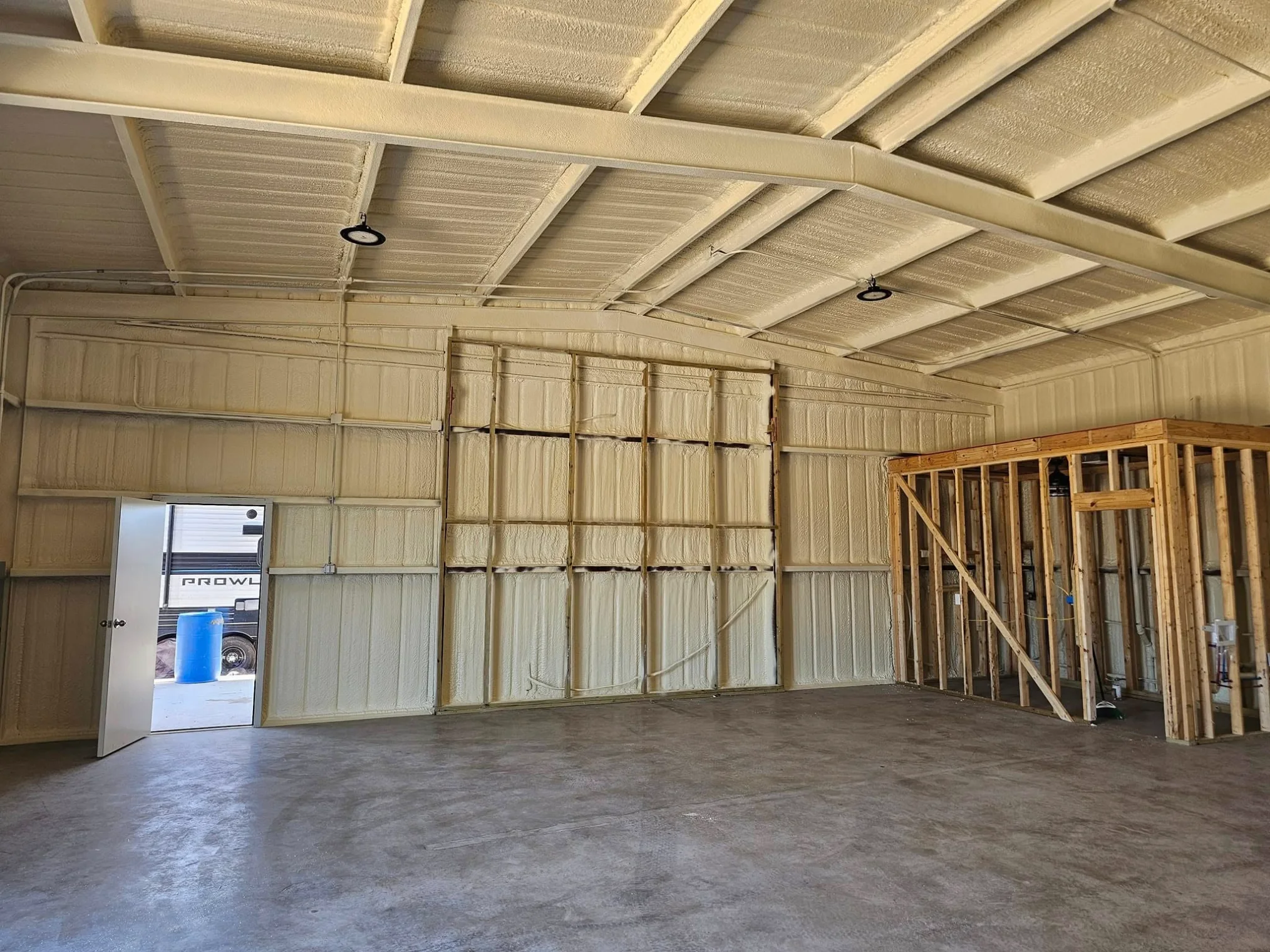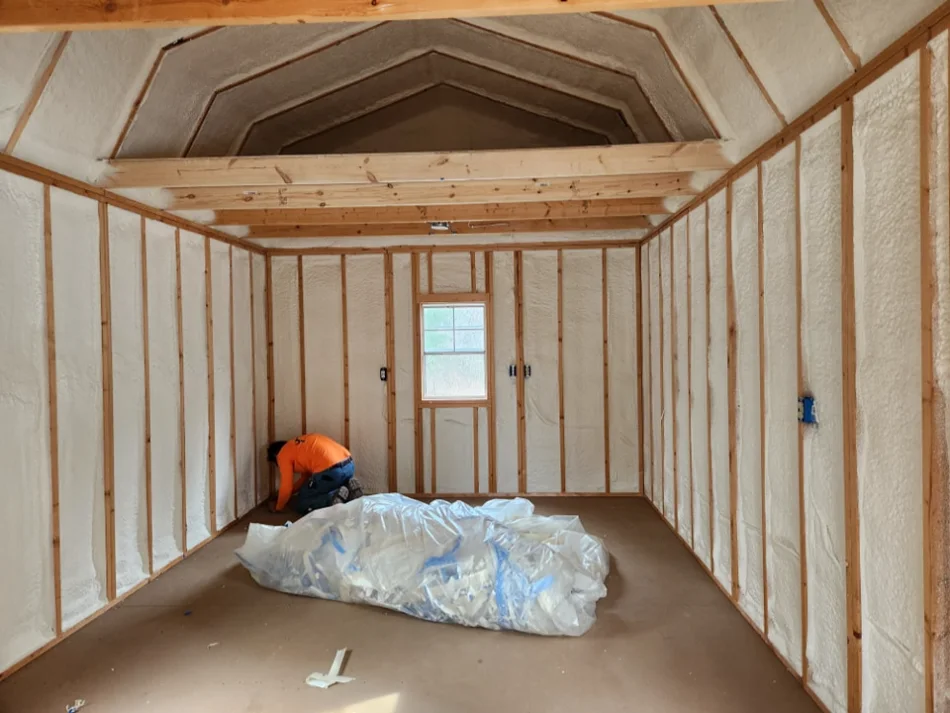
Spray foam insulation offers one of the most effective solutions for reducing energy consumption in Wortham homes and buildings. Given Wortham’s hot summers and moderate winters, minimizing air leakage and stabilizing indoor temperatures is critical to controlling energy bills. Spray foam provides a continuous thermal barrier that performs better than traditional materials in this region.
This article provides technical comparisons, climate-specific guidance, and practical insights to help Wortham property owners make informed decisions. The information reflects real-world application experience with spray foam and other insulation types, particularly in rural and semi-rural Texas environments.
D&D Insulation LLC draws on extensive field installation across Freestone County and surrounding areas, offering insight based on climate behavior, material performance, and efficiency outcomes.
Spray foam expands on contact, filling cavities and creating a seamless air seal. Unlike batt or loose fill, it adheres directly to surfaces and blocks airflow, reducing energy waste caused by uncontrolled air infiltration.
| Feature | Open Cell Spray Foam | Closed Cell Spray Foam | Fiberglass Batt | Fiberglass Loose Fill |
|---|---|---|---|---|
| R-Value per inch | 3.5 – 3.9 | 6.5 – 7.0 | 2.9 – 3.8 | 2.2 – 2.9 |
| Air Seal | Yes | Yes | No | Partial |
| Water Resistance | Low | High | Low | Low |
| Moisture Barrier | No | Yes | No | No |
| Structural Rigidity | Low | High | Low | Low |
| Application Areas | Walls, ceilings | Attics, roofs, crawl spaces | Walls, ceilings | Attics |
| Estimated Lifespan (Years) | 25+ | 30+ | 15-20 | 10-15 |
Wortham experiences average high temperatures above 90°F for nearly four months annually (Source: U.S. Climate Data). Air conditioning use in summer accounts for the majority of home energy costs. Unsealed gaps and low-grade insulation increase system runtime and energy waste.
Closed cell spray foam offers thermal resistance and air-sealing in one material. It prevents hot air from entering attic spaces, reducing heat load on HVAC systems. Open cell spray foam allows controlled vapor diffusion, suitable for interior walls and ceilings.
Bonus Tip: In unvented attics, apply closed cell foam directly to the roof deck. This reduces radiant heat transfer and extends HVAC equipment lifespan by keeping it within conditioned space.
Bonus Tip: When re-insulating, always request a blower door test. This reveals where conditioned air is escaping and verifies the effectiveness of the insulation plan.
| Property | Open Cell Foam | Closed Cell Foam |
|---|---|---|
| Density | 0.5 lb/ft³ | 2.0 lb/ft³ |
| Vapor Permeability | 10 perms | <1 perm |
| Application Thickness (avg) | 3.5″ in walls | 1″ to 2″ in roofs |
| Structural Contribution | Minimal | Adds rigidity |
| Sound Dampening | High | Moderate |

Closed cell creates a barrier that is difficult for insects and rodents to penetrate, but it is not a pest control product.
Most homeowners see lower bills in the first month after installation due to reduced HVAC runtime.
Once cured, both types are inert and safe. Proper ventilation during application is required.
Professional installation is recommended to ensure safety, code compliance, and full coverage.
Contact D&D Insulation LLC for accurate assessments and region-appropriate recommendations. With extensive experience in Wortham and surrounding areas, the team applies insulation that performs reliably across climate cycles.
Phone: (903) 389-5705
Email: [email protected]
Closed cell foam remains stable for over 30 years with minimal degradation.
Spray foam is permanent. Removal is possible but costly and labor-intensive.
Some energy-efficient improvements using spray foam qualify. Check local and federal programs.
Spray foam expands on-site and air-seals; foam board insulates but requires manual sealing of joints.
Closed cell foam limits moisture ingress, helping stabilize indoor humidity.